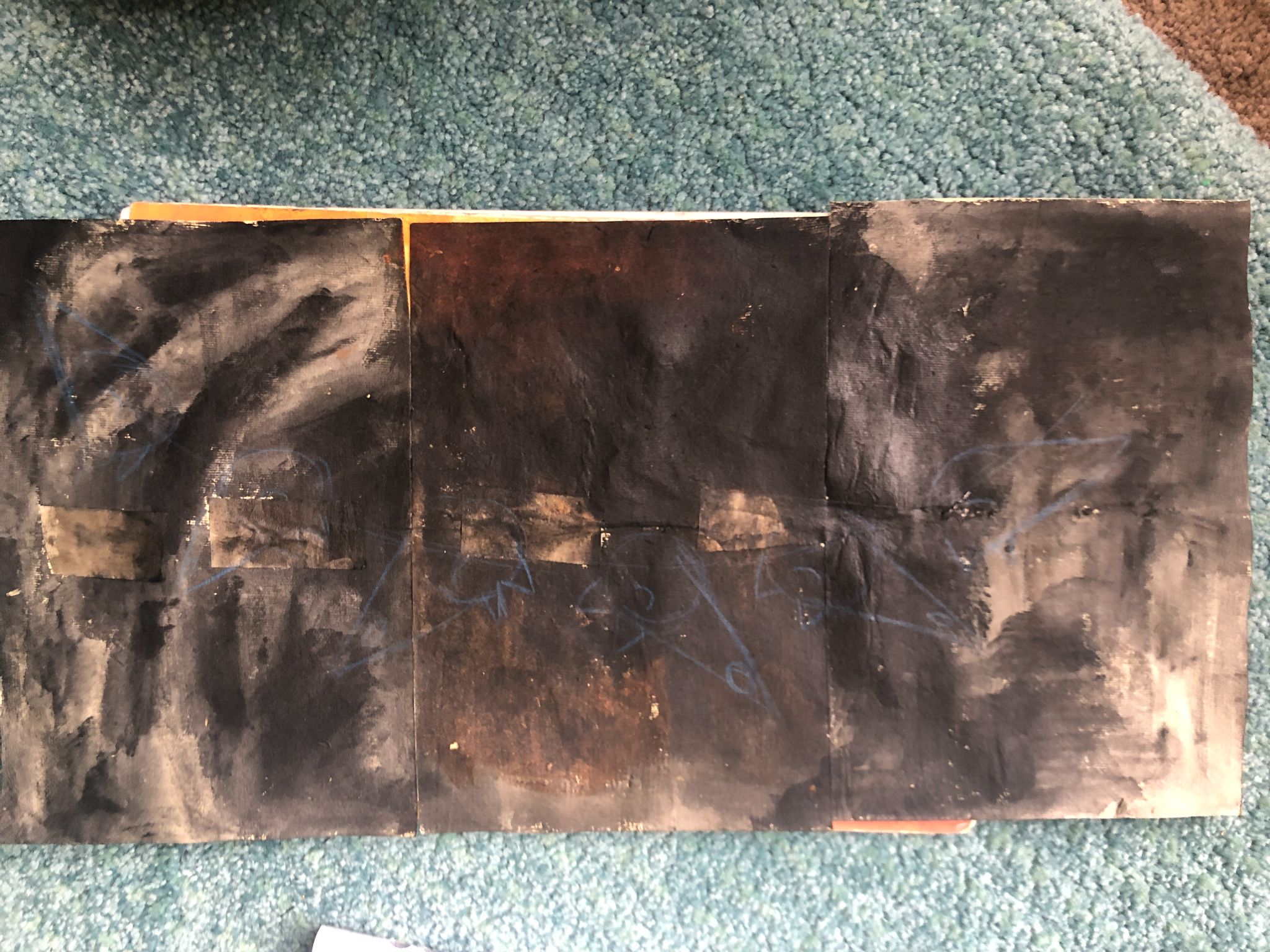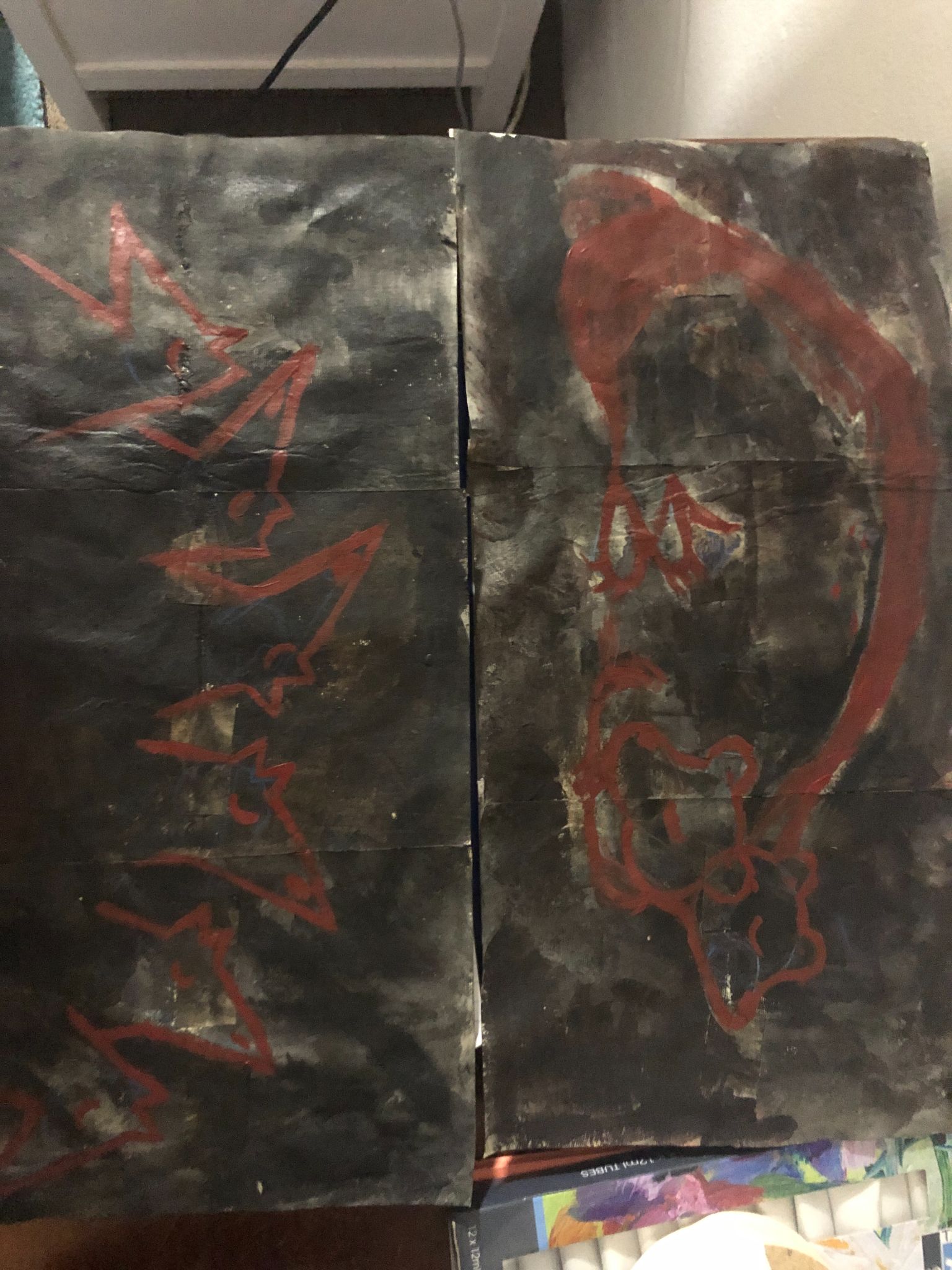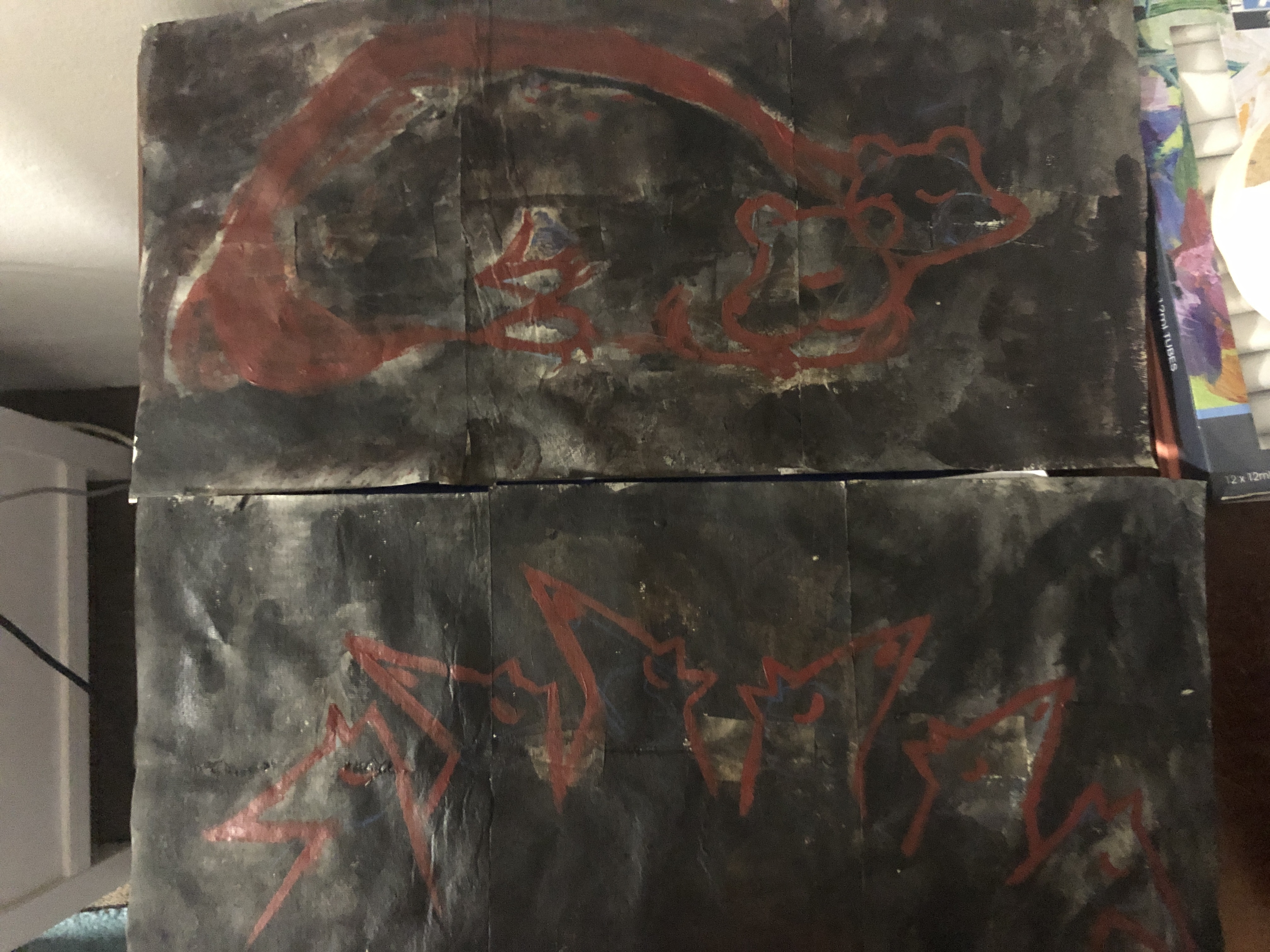Response Video:
https://youtu.be/CWVv4t37DtU
Context:
After using wind in my response last week, I started this week by brainstorming other forces and possible outputs. I settled on combining light with movement, after being inspired by the presence of animation in cave paintings. When the Lascaux cave paintings were excavated and lit with electric lights they mainly appeared to be heaps of overlapping drawings, some with lines drawn over the top. However, it has been discovered that in dim firelight, the drawings became animations based on the movement of the circle of light. These ‘animations’ were made in two ways: a. with the light moving side to side to reveal the drawings animated in a flipbook-like way, or b. with the drawings superimposed on top of each other, and the light moving down or across the superimposed part of the image. In theory, this then becomes a theatre of storytelling and motion, told through the movement of firelight. Using this as inspiration, I wanted to recreate this process, and explore the way the features of this treatment of light could become an interactive, enriching experience.
To gain a better understanding of the way play can exist within this concept, I looked into Costello’s discussion of art and play in Play and the Experience of Interactive Art (YEar). I found Gadamer’s interpretation of art as play aligns with my thought process in pursuing this concept. Gadamer justifies this statement with the way he conceptualises movement in play, as he does not limit it to the player, or just something the player does. Rather, action and reaction between player and game is the movement which defines play for him. In art, he argues this occurs when the art becomes an experience, which changes the person who experiences it. The pleasure of this form of play comes from recognising the representation of something the audience is already familiar with, and seeing or knowing something beyond what the audience recognises in the piece.
Hence, my response this week was anchored in the creation of an experience, which embraces the movement which occurs as audiences interact with it. There is a very literal interpretation of the link between movement and play in art, as physical movement is required to reveal the images which emulate movement. Plus, it is movement of the flame which magnifies the effect, and the force of light which permits it. However, when designing this work, Gadamer's conceptual understanding of movement in play and art was also considered, and I wanted the overall experience to have a perceptible effect on the audience. I think this could be achieved through the historical aspect of the work, the immersiveness of the dark and recontextualisation of light for modern audiences. These factors are also the main vehicles of fun and pleasure in the design, as its main purpose is to be a fun way to experience this concept.
Method:
The process started with brainstorming drawing ideas and testing the effect on lined paper. After testing this, I realised the paper needed to be darker, the drawing needed to be bigger and the original lighter I used was too big.
So, I then moved onto creating a larger piece of paper, and painting it black.
I then sketched my drawing on the paper, and painted over it.

I set up the paintings in a dark room and used a tea light to test the experience. 

Response:
Reflection:
The unfortunate part of recreating this is that it is surprisingly hard to emulate darkness, especially without some kind of covering which would be a fire hazard. The other issue was scale, as I needed to use a very small flame since the actual paintings are much larger. It is hard to capture on film, but the ideal flame should have a circular light, so some torch prototyping could be a good extension of the idea.
I found the series of images created a more desirable effect than the superimposed bear images. This may be because the bear's movements weren’t big enough or didn’t have an effective arc. However, I also think the series of images may just be a better technique, and potentially the original cave painters knew this too.
I attempted a more complex figure with the hand sign, but I realised for the finger to extend I should’ve superimposed the stages, or multiple images, instead of having each finger doing something different.
Overall, I think this would be most fun for a younger audience, as part of an exhibit in a museum (although the fire could be an issue). I would love to see these images in a cave like structure or installation, with potentially some narrative or even 3D little structures made to cast shadows. With more prototyping it could even be something done at home, with a kit and instructions including a cave structure and better torch structure. Potentially incorporating the DIY aspect could lead to more results from this kind of play, and incorporate constructive play.
References
Costello, B., 2009. Play and the Experience of Interactive Art. Sydney: University of Technology Sydney, pp.45-49.
Zorich, Z., 2014. Early Humans Made Animated Art. [online] Nautilus. Available at: <https://nautil.us/issue/11/light/early-humans-made-animated-art> [Accessed 29 August 2021].

